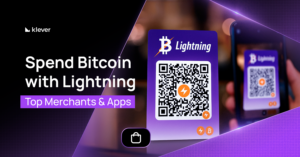
Looking for ways to reduce crypto transaction fees? You’re not alone. As crypto adoption grows, so do the costs of sending, swapping, and managing digital assets. The good news? Many of these fees can be minimized—or avoided altogether—with the right strategies and tools.
Whether you’re sending Bitcoin, interacting with Ethereum smart contracts, or managing tokens across multiple blockchains, this guide gives you 10 clear, actionable tips to help you save more of your crypto in 2025.
1. Avoid Peak Hours to Reduce Crypto Transaction Fees
Even in 2025, timing still matters. Ethereum’s upgrades like EIP-1559 and Pectra have stabilized gas fees, but congestion still affects cost. The same goes for Bitcoin and other major blockchains.
To avoid inflated fees, schedule your transactions during off-peak hours—such as late nights, early mornings, or weekends. Tools like Etherscan Gas Tracker or Mempool.space show real-time congestion and fee estimates.
By simply choosing a better time, you can significantly reduce transaction costs without changing your workflow.
2. Use Layer 2 Networks or Klever Wallet to Reduce Crypto Transaction Fees
Layer 2 networks act like express lanes—processing transactions off-chain, then settling them securely on the mainnet. They’re cheaper, faster, and ideal for frequent users.
Popular options include:
- Optimism, Arbitrum, zkSync, and StarkNet on Ethereum
- Lightning Network for Bitcoin, ideal for real-time, low-cost BTC transfers.
The Bitcoin Lightning Network is especially useful for micro payments—small-value transactions that would otherwise be too expensive on the mainnet. Whether you’re paying for a coffee, tipping online, or sending BTC across borders, Lightning reduces costs to nearly zero.
With Klever Wallet, you can:
-
Receive Bitcoin instantly via Lightning, with no wallet fees
-
Swap between BTC mainnet and Lightning Network with ease
-
Pay with BTC on lightning network and only pay for the base network fee—no hidden charges or intermediaries
And across 40+ blockchains, Klever Wallet automatically finds the most efficient path for your swaps and transfers—including low-fee Layer 2s like Polygon and Avalanche.
Bonus:
-
Pay swap fees using KLV to unlock built-in discounts
-
Apply Klever Rewards Points to lower your total cost even more
With Klever, you don’t need to manage bridges or gas tokens. You get the benefits of Layer 2 and Bitcoin Lightning—faster transactions, lower fees, and better control—all in one place.
3. Swap Tokens Inside Your Wallet to Reduce Crypto Transaction Fees
Swapping tokens through exchanges or third-party DEXs often means paying extra: withdrawal fees, network fees, bridge fees, and swap fees. These costs pile up.
Klever Wallet simplifies this by letting you swap tokens directly inside the wallet, avoiding unnecessary transfers. The swap fee ranges from 1% to 1.5%, clearly shown before confirmation.
You can:
- Pay the fee in KLV for a discount
- Apply Rewards Points to reduce the total cost
- Swap across multiple blockchains without leaving the app
It’s fast, transparent, and cost-efficient—everything a good swap experience should be.
4. Choose the Right Network Fee: Economy, Regular, High, or Custom
Whether you’re sending Bitcoin, Ethereum, or another coin, most blockchains let you choose the network fee based on how quickly you want the transaction confirmed.
In Klever Wallet, you can select:
- Economy (slowest, cheapest)
- Regular (balanced)
- High (fastest, higher cost)
- Custom (manual settings for advanced users)
If your transaction isn’t time-sensitive, choosing Economy can cut your fee in half or more. Custom mode is ideal when you want to fine-tune for maximum savings. Fee selection isn’t exclusive to Ethereum—it’s a global strategy across many networks.
5. Pay Fees Using KLV or Rewards Points to Reduce Cryptocurrency Transaction Costs
Inside Klever Wallet, users can reduce swap fees by paying them in KLV, the native utility token of Klever Blockchain. Doing so triggers automatic discounts that vary based on the provider.
In addition, the Klever Rewards Hub lets you earn points for completing daily actions, which can be applied to partially reduce swap fees. These points don’t eliminate the fees, but they help lower the cost consistently over time.
It’s a practical, built-in way to offset the fees you can’t avoid.
6. Leverage Klever Blockchain’s Transparent Fee Model to Reduce Crypto Transaction Costs
Not all blockchains charge the same for a simple transaction. Some are built to be fast and affordable; others, while secure and decentralized, come with higher operating costs. If you want to reduce crypto transaction fees, the network you use matters more than you think.
Let’s compare:
- Ethereum: Popular, but often expensive—especially when interacting with smart contracts or NFTs.
- Bitcoin: Secure and widely used, but fees vary widely depending on congestion.
- Solana, Polygon, BNB Smart Chain, and Avalanche: Built for low fees and high throughput. Transactions cost cents—or less.
- Klever Blockchain: A Layer 1 built for real-world use cases, offering ultra-low fees, 4-second block times, and instant finality.
Using Klever Wallet, you get native access to Klever Blockchain plus over 40 others, including low-cost options like Solana, Avalanche, and Polygon. The wallet automatically displays network fees before confirmation, so you can pick the chain that matches both your transaction type and your budget.
For example:
- Swapping $50 worth of tokens? Avoid Ethereum unless necessary.
- Sending USDT to another wallet? Use Klever Blockchain, Solana, or Polygon instead.
- Launching a community token? Klever Blockchain offers the lowest friction.
In a multichain world, the smartest users aren’t just choosing the right asset—they’re choosing the right highway to move it. That’s where long-term savings really begin.
How Klever Blockchain Fees Work
Klever Blockchain uses a clear and consistent fee model designed to make costs predictable and fair.
Each transaction includes:
- A fixed Bandwidth Fee of 2 KLV
- A Kapp Fee, which varies depending on the smart contract or operation performed
For example:
- A token transfer costs 3 KLV (2 KLV for bandwidth + 1 KLV transfer Kapp)
- A KDA creation costs 20,002 KLV (2 KLV for bandwidth + 20,000 KLV Kapp)
These fees are distributed as follows:
- 1 KLV is burned, reducing supply
- 1 KLV goes to the validators pool
- The remaining Kapp fee goes to KFI holders, supporting decentralized governance
Learn more about Klever Blockchain fees at docs.klever.org.
KDA Fee Pools: More Flexibility for dApp Users
Klever Blockchain also supports KDA Fee Pools, allowing dApp and project owners to let users pay transaction fees with their own token—not just KLV. This improves usability for real applications by:
- Eliminating the need for users to hold KLV
- Enabling branded dApp ecosystems with seamless onboarding
- Reducing friction for new users and token holders
Combined with Klever Wallet’s interface—where all fees are shown before confirmation and swaps are optimized across blockchains—this fee system empowers users to minimize cost while supporting the network’s long-term sustainability.
7. Avoid Unnecessary Transfers Between Platforms to Reduce Crypto Transaction Fees
Every move you make between platforms—exchanges, DEXs, bridges—adds a new layer of fees.
A better approach? Minimize transfers by doing more in one place.
With Klever Wallet, you can:
- Buy crypto directly via integrated fiat on-ramps
- Swap without leaving the wallet
- Send and store assets across multiple chains
That means no exchange withdrawal fees, no bridging costs, and no transfer delays. Fewer steps, fewer charges.
8. Review Swap Fees Carefully Before Confirming
Some platforms don’t show you the full fee picture until it’s too late. But understanding your costs before confirming a swap is essential.
In Klever Wallet, before every swap you’ll see:
- The swap fee (1% to 1.5%)
- If you’re paying with KLV (for a discount)
- How many Rewards Points are being applied
- The final amount you’ll receive, after all deductions
This kind of visibility protects your funds and helps you make better decisions. It’s the opposite of “click and hope”—it’s click and know.
9. Take Advantage of Rewards Programs to Offset Fees Over Time
Reducing crypto fees isn’t just about instant cuts—it’s about earning value back over time.
The Klever Rewards Hub lets users earn points for:
- Swapping
- Completing tasks
- Inviting friends
Those points can then be applied to reduce swap fees. They don’t eliminate the fee completely, but they ease the burden—especially for frequent users.
It’s like getting loyalty points for being active with your wallet—and using them to reclaim value from every transaction.
10. Use Tools Designed to Reduce Fees from the Start
You can follow every smart tactic in the book—but if the wallet or platform you’re using wasn’t built to reduce fees, you’re always starting at a disadvantage.
That’s why using a solution like Klever Wallet makes a difference from day one.
Klever Wallet was designed from the ground up with efficiency and cost reduction in mind. Instead of patching high-fee problems after the fact, it prevents them at the source.
Why Klever Wallet Helps You Pay Less:
- Built-in swap feature with reduced fees (1% to 1.5%, depending on the provider)
- Transparent fee previews before every transaction
- Support for paying fees in KLV, with the option to use Rewards Points to lower costs even more
- Access to over 40 blockchains, including low-cost options like Klever Blockchain, Solana, Polygon, and Avalanche
- No wallet fees for basic actions like sending, receiving, or managing your crypto—including on the Lightning Network
- Klever Blockchain integration, where transaction fees are predictable and low (e.g., 3 KLV for a transfer, with part burned and part distributed to validators and KFI holders)
Important Reminder:
Unlike some apps that sneak in wallet management charges, Klever Wallet does not charge any fees for sending, receiving, paying or storing your crypto—even on Bitcoin Lightning. You only pay the base blockchain fees, with no additional costs from the wallet itself.
In a multi-chain environment filled with hidden costs, choosing a tool like Klever Wallet ensures you’re not just saving money—you’re taking control.
Stack Small Wins to Keep More of Your Crypto
In 2025, reducing crypto transaction fees is no longer just a technical skill—it’s a practical advantage. The crypto space is full of platforms and tools that quietly eat into your balance through small, repeated charges. But with a few smart habits and the right wallet, you can flip the script.
Each tip might only save cents on its own—but together, they add up to a significant difference in your portfolio’s performance over time. Lower fees mean more capital. More capital means more flexibility, more opportunity, and more value retained with every move you make.
Efficiency is a form of power. And you now have the tools to use it.
Stop overpaying on every transfer. Switch to Klever Wallet and feel the difference a cost-efficient wallet makes.
Be Klever


